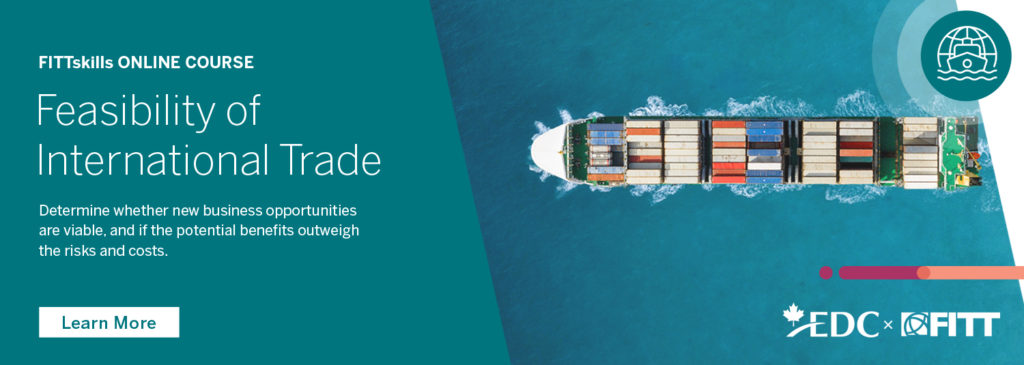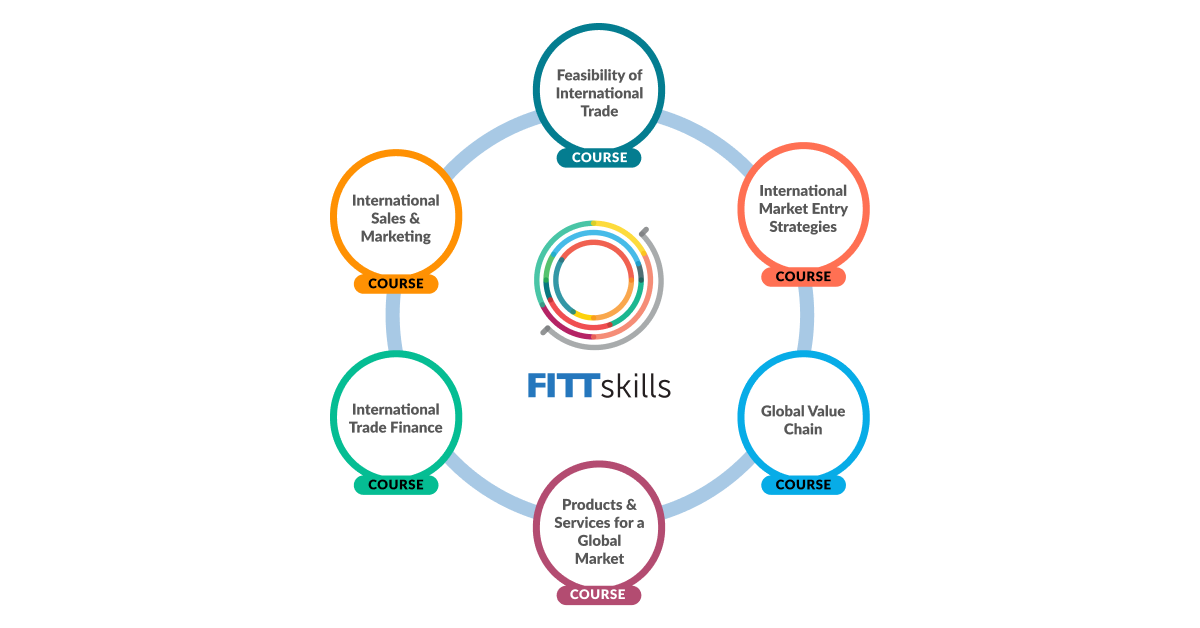If you are in business in Canada, then chances are you could start an export business. You may thrive solely on local and regional trade, but if you are thinking about whether you should export your goods or services, chances are exports are a path to growth for you.
Gaps in knowledge are among the top reasons that some small and microbusinesses don’t yet export their goods or services, according to the Canadian Federation of Independent Business (CFIB).
Regulatory hurdles and expenses are other factors keeping many small businesses local. This guide to exporting provides an overview and resources to help you get started if you want to sell your products and services in international markets.
How international trade affects Canadian businesses
In recent years, government statistics show that international trade accounted for nearly two-thirds of the Canadian GDP.
Canadian business exports add 3.3 million jobs to the economy. To put that in context, that’s nearly one in six Canadian jobs.
Even if your business is secure, you may still want to scale it to take advantage of opportunities for growth.
For businesses of any size, exporting provides the opportunity to find new markets, scale your business, and become more resilient in a volatile economy. Yet, as recent research from the CFIB shows, only a minority of Canadian small and medium-sized businesses are currently seizing these opportunities.
Step 1: Are you ready to join the global market?
The first step is to decide whether your business is ready to expand into international trade. Identify which of your products or servicesmay appeal to consumers in other countries. Next, figure out whether the investment is likely to be worth it by doing a feasibility study and thorough market research.
FITT’s Export Vision Board can help you realize what exporting might look like for your business.
You can use the Export Vision Board template to visualize and capture the critical components for your international market expansion.
If you’re not sure what to include, there are 3 examples of completed templates including B2B product exports, B2C product exports, and service exports to inspire you and help you get started.
If you want to dig deeper, consider taking some training like the Feasibility of International Trade course, which was designed to help businesses of all sizes assess whether international opportunities are viable, and if the potential benefits outweigh the risks and costs.
Once you decide whether exporting is a good move for your business, start making a plan so your actions will be strategic, not accidental. Identify your target consumers and how you offer something better than what they might find locally.
Continue to revise and change your export plan as you learn more.
Step 2: Learn the bureaucratic requirements for your industry
Each industry has its own set of regulations and laws to work within when it comes to exporting or importing.
Exporting in Canada means actively engaging with multiple government, legal, and financial frameworks.
Your first step is learning what is required within your industry. For example, exporters must comply with regulations enforced by the Canada Border Services Agency (CBSA). These regulations may include export classification, permit requirements, and rules for export reporting in Canada.
The value of your product plays a role. All exports above $2,000 require a declaration using the CBSA’s Canadian Export Reporting System (CERS) and may also need special permits from Global Affairs Canada. Also, don’t forget taxes that may apply, like Goods and Services Tax (GST) and Harmonized Sales Tax (HST).
As you unravel the requirements, use that information to update your plan. Does this knowledge change the logistics of how you will get the product or service to your prospective customers abroad? How does this affect your budget and costs? How will you cover these added expenses?
Not only do you need to be aware of Canadian trade regulations, but also those in your export destination country. Once you have a sense of the fees, taxes, and tariffs involved, you are in a better position to plan. Just be aware that laws, tariffs, and taxes change.
If you have been keeping up with U.S. news, you may wonder if now is the right time with increased tariffs on certain exports to the United States.
In international trade, like in life, change is one of the few constants.
These changes and potential culture changes make the new trade environment more complex, but you have a couple of options.
Now is a time when you could focus on building your market outside the U.S., or you could focus on learning the ins and outs of expanding your North American market. Either option has a unique set of challenges, and both require a nimble approach as you adapt to any unfolding changes.
Step 3: Identify your supply chain and budget
Map out the specifics within your supply chain from planning, manufacturing, marketing, and getting the product to your consumers. If you offer a service, this may be easier, but you should go through the same steps.
Some of these steps are likely already part of your business workflow. Spend a little extra time on the added steps, such as any permits and reporting you may need to do. Also, note any changes to your product as your export country may have specific standards for its own regulations, safety standards, or documentation requirements. Will you need to translate any of your packaging or materials?
Update your plan and put together a budget. Do you need to raise additional capital in order to build the export branch of your business? If so, take the time to look into business development loans, grants, and investment capital options.
Step 4: Develop your marketing and fulfillment plan
Marketing your products abroad is challenging. But thanks to the internet and social media, your customers are more accessible than ever. The hard part can be effectively communicating with potential customers in a language you are not fluent in. If this is your plan, be sure to partner with a quality translation and localization service.
Since you take on additional financial risks when exporting, you want to be sure to conduct market research and develop a comprehensive marketing strategy.
At this point, you may be in a better position to revisit your risk assessment. What are your export-specific risks beyond those you face as an entrepreneur in your home country? Craft a plan to mitigate those risks.
In summary, learning how to export in Canada is a multi-step process that includes:
- Assessing whether your business is ready
- Developing an export vision that aligns with your business goals
- Conducting market research as well as feasibility analysis
- Understanding export regulations and compliance
- Managing tax, payment, and GST/HST implications
- Identifying and managing export-specific risks
- Building a formal export plan with a timeline for implementation
The challenges and complexities of running an export business can be overwhelming. But there is plenty of support available to businesses of all sizes looking to grow globally.
The thing that trips up many businesses that are new to importing and exporting is “knowing what they don’t know”.
Or in other words, getting a full picture of what is involved in setting themselves up for success in international markets, and how to avoid common pitfalls that come with inexperience.
Exploring training to fill in knowledge gaps, hiring outside help that bring in much-needed expertise, and seeking guidance from trade advisors and locally-engaged support such as the Trade Commissioner Service, can make what may seem daunting doable.












disqus comments